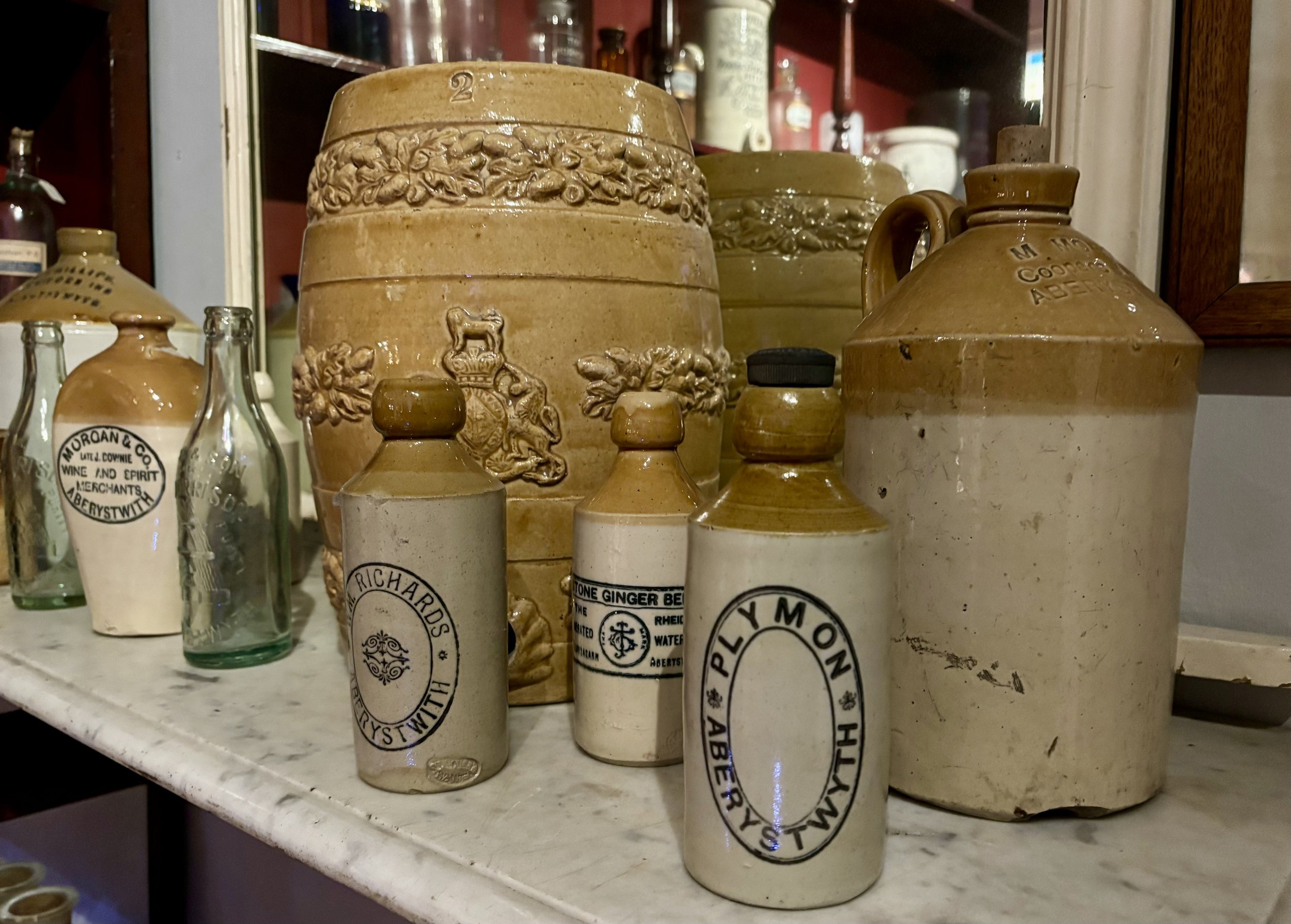Lashings of Ginger Beer
If, like me, you grew up devouring the exploits of ‘The Famous Five’ you will immediately ‘get’ the title. If not, then it simply refers to the most important part of any picnic consumed by these four intrepid children and the dog Timmy in the 1940s England of Enid Blyton. So why am I writing about ginger beer…
Yesterday I visited the Ceredigion Museum in Aberystwyth and of all the many wonderful exhibits there, it was these bottles which caught my eye. Possibly initially because the one at the front has “PLYMON” written on it and I immediately connected that to the source of the River Wye (which I live on the banks of) high up in the Cambrian Mountains. In fact there are three rivers which originate from Plynlimon / Pumlumon. The Rheidol flows down into Cardigan Bay at Aberystwyth whereas the River Severn and the Wye enter into the Bristol Channel.
So were these water bottles? Unlikely - although it’s possible that the water from Plynlimon was used to make Ginger Beer which was generally stored and sold in stone bottles.
Ginger beer can be made at home and isn’t really that different to making other fermented drinks such as kombucha and kefir. In fact there is a long history of it being made in the home as something for the hard-working men to quench their thirst with when doing hard physical work like mining and quarrying.
On this website I found a recipe from 1852 which tells how Miss Curtis was using lump sugar, lemons, yeast, stem ginger and water to make her ginger beer. In fact you don’t need yeast - you can just let it ferment like sourdough. If you want to have a go at making your own, full modern instructions are on the website.
So why the stone bottles? Well, like anything fermenting, pressure builds up inside the container and therefore it needs to be strong enough not to burst open. The stone bottles also helped to keep the ginger beer fizzy and cold when being transported and exported - large amounts were shipped to North America during the 1900s. Finally, the stone bottles helped with appearances - ginger beer wasn’t at that time very visually appealing, being somewhat beige and cloudy.
If you’re wondering about the name - no, it isn’t actually a beer but yes, it did contain alcohol - up to 10% at times.
As a coastal town (and port) Aberystwyth imported and exported goods. The two main ingredients, ginger and sugar had been imported to Europe via the spice trade for hundreds of years which is why ginger beer has been a popular drink for so long. I can’t find any reference to either specifically coming in to the port but Slater’s Directory of 1880 describes the trade of the harbour as:
"the exportation of lead and silver ore, and a small quantity of copper ore. The imports are timber, shop goods and other merchandises from Liverpool, Bristol, and London; groceries, coals, slates and slabs, flagging, bricks, flour, fish, limestone, &c.”
It’s just one example of how one small artefact can take you back in time to the housewives of Wales brewing their ginger beer for their husbands using spices and groceries produced on the other side of the world. This of course is linked to the colonialisation and control which Britain had over other countries. By 1655 Britain controlled Jamaica where over two million pounds of ginger were exported to Europe every year. Even today, one of the most popular brands of ginger beer is Old Jamaica.
Just a stone bottle? Maybe - but the historical links tell a much bigger story.
Incidentally…. In ‘Five Get into a Fix’ the group are sent on holiday to the mountains of Wales. Maybe they even drank some of the ginger beer brewed in Aberystwyth!
